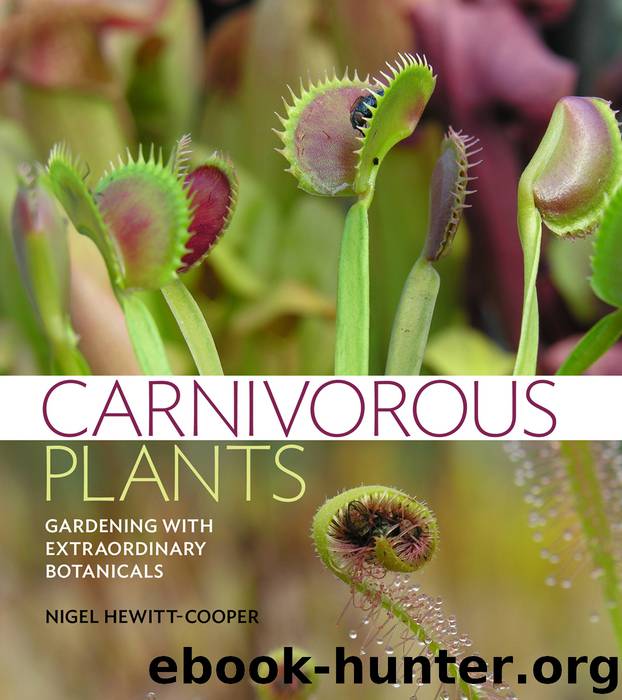Carnivorous Plants by Nigel Hewitt-Cooper

Author:Nigel Hewitt-Cooper
Language: eng
Format: epub
Publisher: Timber Press
Published: 2015-02-25T05:00:00+00:00
A dormant winter resting bud of Drosera filiformis.
The dormant resting bud and stipules of Drosera closterostigma.
A few species appear to take it one step further, and produce a stem. In Drosera dichrosepala, this can be up to 4 in. (10 cm) in height. As they become taller, they produce aerial roots which serve to steady the plant, resulting in what appears to be a plant on stilts, held up above the baking soil surface. For some South African species, the habitat, as in Australia, dries over the summer. To survive this, a number of species produce roots which are thick and fleshy, and in a way similar to tuberous plants, they lose their growth in the spring and the roots remain dormant until the following autumn.
Whatever their particular environmental adaptations, all droseras share a common characteristic: leaves with mobile tentacles, each of which is furnished at its tip with a swollen gland surrounded by a droplet of mucilaginous glue. The density of these tentacles varies between species, with some densely embellished and others, such as the Australian Drosera schizandra, having only a sparse covering.
Structurally they are all similar, and the amount of movement varies; some barely moving at all. The length of the hairs is loosely dictated by the size of the leaves. In a number of species, the leaves themselves are also capable of movement, curling over and around their prey like an octopus, wrapping up flies and even wasps. In Drosera capensis and D. regia, the effect can be dramatic.
Download
This site does not store any files on its server. We only index and link to content provided by other sites. Please contact the content providers to delete copyright contents if any and email us, we'll remove relevant links or contents immediately.
Sapiens: A Brief History of Humankind by Yuval Noah Harari(14254)
The Tidewater Tales by John Barth(12609)
Mastermind: How to Think Like Sherlock Holmes by Maria Konnikova(7229)
Do No Harm Stories of Life, Death and Brain Surgery by Henry Marsh(6891)
The Thirst by Nesbo Jo(6832)
Why We Sleep: Unlocking the Power of Sleep and Dreams by Matthew Walker(6618)
Life 3.0: Being Human in the Age of Artificial Intelligence by Tegmark Max(5476)
Sapiens by Yuval Noah Harari(5294)
The Longevity Diet by Valter Longo(5021)
The Body: A Guide for Occupants by Bill Bryson(4976)
The Rules Do Not Apply by Ariel Levy(4863)
The Immortal Life of Henrietta Lacks by Rebecca Skloot(4527)
Animal Frequency by Melissa Alvarez(4395)
Why We Sleep by Matthew Walker(4361)
The Hacking of the American Mind by Robert H. Lustig(4319)
Yoga Anatomy by Kaminoff Leslie(4308)
All Creatures Great and Small by James Herriot(4233)
Double Down (Diary of a Wimpy Kid Book 11) by Jeff Kinney(4208)
Embedded Programming with Modern C++ Cookbook by Igor Viarheichyk(4103)
